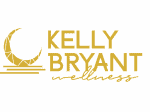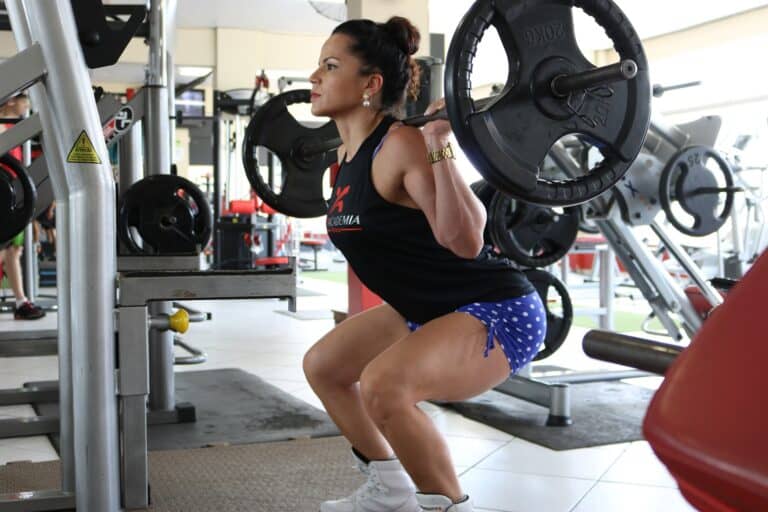I absolutely love building strength workouts. It’s the basis of everything thing I do here at Kelly Bryant Wellness, from personal training to my prenatal and postpartum courses . Figuring out how to nurture, train and move bodies to improve them in some way brings me joy.
And because it brings me joy — and for whatever reason you’ve decided to come hang out in this lil corner of the internet — I figure you might be interested in learning more about how to design impactful workouts.
Whether you actually want to plan your own strength workouts or just want a deeper understanding of what you’re doing (whether planned by me or someone else) I’ve got you.
Cardio, mobility, yoga, pilates and other forms of movement are also beneficial, and are always part of the programs I design. But for this post, I’m going to be sticking to resistance training. That means using weights, bands, or even your own bodyweight to apply force to your muscles and make them stronger.
Key 1: Start with your strength training annual goal
Sometimes it can feel like a daily win every time we get to the gym or our workout space, and you should pat yourself on the back for those. However, when building a comprehensive plan, you have to think of what you want to achieve on a macro scale. There are five focuses of strength training, and while they will all be an important part of your success, your primary goal should take center stage. Think of these goals, or phases, of strength training as steps on a ladder that you progress through on your journey.
Goal 1: Balance
This is foundational movement, working on the stability of your body and strengthening your coordination and all of your stabilization muscles. It’s the foundation of your strength house. If you don’t have a decent foundation of balance and stability, progressing and doing bigger, heavier movements with good form is going to be a struggle.
For most people, balance won’t be the primary goal. The exceptions might include elderly folks trying to avoid slips and falls, or people recovering from injuries. I have clients into their 60s and even 70s that move past this phase regularly.
Goal 2: Endurance
Endurance strength is also very important because it works to build up your muscles’ ability to perform exercises for a long time and can increase your overall strength, even if you never move to another phase. This is typically done with lighter weights, somewhere around 50 percent of your max effort, for a lot of repetitions.
Goal 3: Hypertrophy
This is the muscle growth goal, which is exactly what hypertrophy means. Muscle growth doesn’t just mean looking like a bodybuilder. My Strong As A Mother: Live program is a hypertrophy program. If you just want to look more toned and like you work out regularly, that’s hypertrophy. In hypertrophy you’re typically working with 60-75% of your max and focusing somewhere between 8-15 reps per set, training close to failure.
Goal 4: Max Strength
This goal is exactly what it sounds like: How well you can move as much weight as possible on each rep. Even if you’re not trying to become a power lifter, max strength still has a ton of benefit for our bodies and can help supplement the hypertrophy, endurance and overall functional strength. Here, you’ll want to get closer to your max for each lift and focus on just a few reps per set with good form.
Goal 5: Power
The power goal is where you add explosiveness and athleticism. The reason it’s stacked last is because without the balance, endurance, muscle growth and raw strength that come from the other goals, it’s harder to grow your athleticism. You’d be much more prone to injury due to bad form without that mind-muscle connection you’ve established. If this is not your primary goal, you may only do this one or two phases out of your year.
Key 2: Determine what each month/phase will focus on
A training phase is a 4-6 week period where your workouts repeat weekly (or across 4 days, 8 days, etc — more on that in Key 3) and are designed to work on one of the above goals. Even though the levels of resistance training progress, you won’t merely train from level 1 to 5. You’ll more likely go up and down, cycling through all of the phases, but hovering nearest your primary goal.
For example, if you’re focusing on hypertrophy, you may go something like 2, 3, 2, 3, 4, 3, 4, 5 in your phases. You’ll hit hypertrophy the most, but you’ll also be adding in those other key elements that will give you well rounded strength and better compliment your goals than just doing the same workouts for the whole year. If you were focusing on max strength, you may spend more time in the higher phases, while for endurance you would want to spend more time in the earlier phases.
Key 3: Think about what each week or split will look like
I use the term week because it’s a nice easy stopping and starting point, but your workout splits can be 4 days long, or 8 days or whatever makes sense for you. They’re called splits because quite literally it’s how you will split up working the various parts of your body to accomplish your goals.
Some popular splits include:
Bro Split
This one gets its name from stereotypical gym bros, who focus on one muscle group per day. So you might have a chest day, a back day, a legs day, a shoulders day and an arms day.
Push/Pull Split
This split divides your workouts into pushing movements one day, and pulling movements the next. So, workout one might include bench press, shoulder presses, and squats, then workout two would include deadlifts, rows and pull ups. Some people also take this split and make it push/pull/legs to put leg work on a separate day.
Total Body Split
This one isn’t so much splitting up the muscles worked, as it’s working every muscle group during your workout but with different exercises each workout. You might choose to do a bigger lift for a body part in one workout and a smaller one in the next workout. For example, maybe you have squat one day and then do a lunge the next day so that you are hitting the quads effectively, but not doing such a heavy lift each workout.
Upper Body/Lower Body Split
This split divides your upper body work from your lower body exercises on different days.
I have used all of these splits in my workout programs. One isn’t necessarily better than the other, it just depends on how you like to move. If you really like focusing on exhausting one muscle group and have a very reliable routine, you could opt for a bro split and letting it rest for the rest of the week. However, if you want to optimize calorie burn or your workout schedule is spotty, a total body split may work for you.
Key 4: Make sure you include all the foundational movements
There are five foundational movement patterns that should be included in every split. You are more than welcome to add all the fancy stuff you see on Instagram, too, but you’ll get more mileage out of doing the basics well first. Not only will these foundational movements get you the most results for your effort, they’ll help you realize what your weak spots are and inform which accessory work you may need to add.
1: Pressing
This refers to upper body pressing movements examples include the bench press or the shoulder press.
2: Pulling
This refers to upper body pulling to activate the back, like rows or pull ups.
3: Squatting
While this one absolutely means squatting, any quad focused exercise like lunges or leg press would qualify here, too.
4: Hinging
Hinging from the hips and focusing on that hip drive and extension, such as deadlifts or hip thrusts.
5: Carry
Quite simply carrying heavy things in your hands. This can just be a farmer’s carry with heavy dumbbells to enhance grip and posture or overhead carries to enhance shoulder stability.
Others I like to include
Technically every movement can be considered one of the 5 above, but I want to call out a few more. I make sure to to include breathing and core/PF stability, as well as rotation in every split because I’m often working with moms who have functional needs — think: childbirth recovery, carrying squirming kiddos, or twisting around in the car and tell your kid to stop putting that in their mouth.
Putting it all together
Building your own workouts may seem daunting, but to get it done you first need to decide your primary strength goal. Then you need to plan out your phases so that you get all types of strength to enhance your primary goal. Once you’ve mapped that out, you can choose a split that works best for you. After that, build the individual workouts that focus on the foundational movement patterns listed above.
Of course, if you’ve gotten here and you are just way too overwhelmed by the prospect of doing this and doing it right, I’ve got you. That’s specifically why I created Strong As A Mother: Live. This program helps you get stronger by moving through the various phases with a couple of strength training workouts per week, along with yoga, pilates, high-intensity interval training and more to give you a balanced workout plan to get you strong and confident. If you think this program would be a good fit for you, you can apply here.

